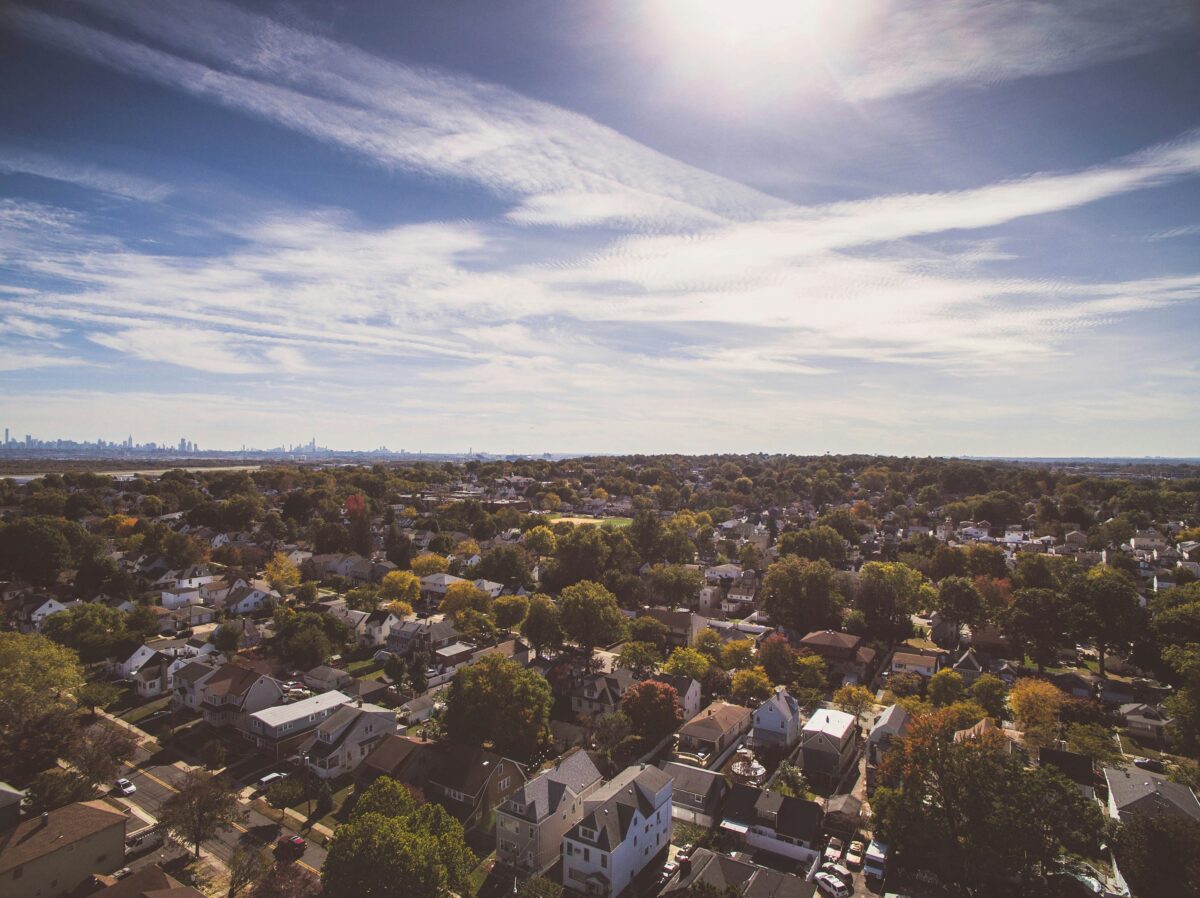More than half of the United States’ population lives in suburbs. Typically, suburbs are defined as being within metropolitan areas but outside of core cities. They are also typically less politically progressive and more culturally homogenous than core cities; have fewer green spaces, plants, and animals; and lower food-producing capacities than rural areas. However, this distinction may be blurring as a result of new developments. There is another type of residential neighborhood emerging in the United States: the agrihood.
An agrihood is defined as an organized residential community integrated with agriculture. In practice, though, the word has come to describe a set of relatively luxurious communities that emphasize sustainable, protected outdoor space. They typically consist of stand-alone, single-family homes that are purchased, rather than rented. These homes are usually surrounded by natural spaces and farmland, and residents share the produce from the farm.
One example of a prototypical agrihood is Wetrock Farm in the outskirts of Durham, North Carolina, 15 minutes (driving) from the city center. Durham is a rapidly growing city with many young professionals, known for its technology companies and research institutions. As a result, Wetrock Farm is able to attract the typical residents of a luxurious agrihood: millennials with money to spend on organic food and outdoor space.
At Wetrock, homes are built with environmental impact in mind. All homes are “net-zero” with respect to energy related carbon emissions. All homes have solar panels on the roof, as well as LEED certification, which certifies their energy-efficiency. Wetrock also promises to minimize the use of harmful chemicals during the construction process, which may help improve the health of residents and their children. The neighborhood is, however, built on the assumption that residents can and will drive to Durham for recreation and possibly for work, as there is not reliable public transportation to bring them into the city. Because of their driving, residents may produce harmful chemicals and carbon emissions outside of the home.
With respect to food and agriculture, residents receive weekly deliveries of fresh seasonal produce grown with “sustainable farming practices” on the neighborhood’s 15 acres of farmland and greenhouses. The produce includes lettuce, kale, sweet potatoes, green beans, collards, onions, bell peppers, peaches, cherries, apples, pears, persimmons, pawpaws, and pecans. The greenhouses allow produce to be harvested continuously throughout the year.
The model of individuals buying into a weekly share of a farm’s produce is not new: it has been around for decades as “Community Supported Agriculture,” or CSA. A traditional CSA venture involves members (typically local to the area of the farm) purchasing shares of the farm’s production in advance of the harvesting season, so that they can receive regular distributions of produce from the farm throughout the season. Farmers benefit from the model because it offers more financial security, as standard fees are paid in advance, regardless of how the market and harvest look in the end. CSAs are fairly well established: by 2015, over 7,000 farms were already engaging in such an arrangement with some consumers.
Agrihoods function like CSAs in that residents purchase shares of the produce of the farm in advance of the harvesting season. They are different in some ways, though. In an agrihood, the farm is only a walking distance from members’ houses. Also, residents not only have the opportunity to consume produce from the neighborhood farm, but also to enjoy the farmland recreationally. At Wetrock, residents can take farming classes from experts, jog through vineyards in the morning, and picnic and celebrate together in the natural spaces provided by the farm.
While agrihoods like Wetrock offer easy access to a high quality of life and local, more ecologically-minded food choices, they are often too expensive for the average person. As of March 2021, the average single-family home in Durham costs less than $300,000, but the cheapest option at Wetrock costs over $400,000, even though Wetrock is far from the city center. This price does not include the cost of the farm-share. In other agrihoods across the country, it is not rare to find homes selling for millions of dollars. As a result, the cost of living in these agrihoods may ensure that, like in some traditional gated communities, the residents will be very wealthy, and often disproportionately white.
The increased cost of living in an agrihood is another reminder that access to green spaces is something that is often determined by socioeconomic status. Access to green spaces improves both physical and mental wellbeing. In many cases, though, it is auctioned off to the highest bidders. As a result, the rise of the agrihood could fail to address issues of equity and accessibility. However, for now, it does offer a model of more localized and personalized agricultural systems, which can help deepen peoples’ connections with their food and the land from which it comes. Eventually, this model could be applied to neighborhoods around the country, including those that are less financially stable.
Sources:
Giacobbe, A. (2019, January 11). What’s an “Agrihood”? The Wealthiest Americans are clamoring to live in one. Retrieved March 05, 2021, from https://www.architecturaldigest.com/story/agrihood-residential-real-estate
Parker, K., Horowitz, J., Brown, A., Fry, R., Cohn, D., & Igielnik, R. (2020, May 30). Demographic and economic trends in urban, suburban and rural communities. Retrieved March 05, 2021, from https://www.pewresearch.org/social-trends/2018/05/22/demographic-and-economic-trends-in-urban-suburban-and-rural-communities/
The Alternative Farming Systems Information Center. (2019, May). Community supported agriculture. Retrieved March 05, 2021, from https://www.nal.usda.gov/afsic/community-supported-agriculture
Wetrock Farm. (2019). Living – Agrihood in Durham, NC. Retrieved March 05, 2021, from https://www.wetrockfarm.com/living

